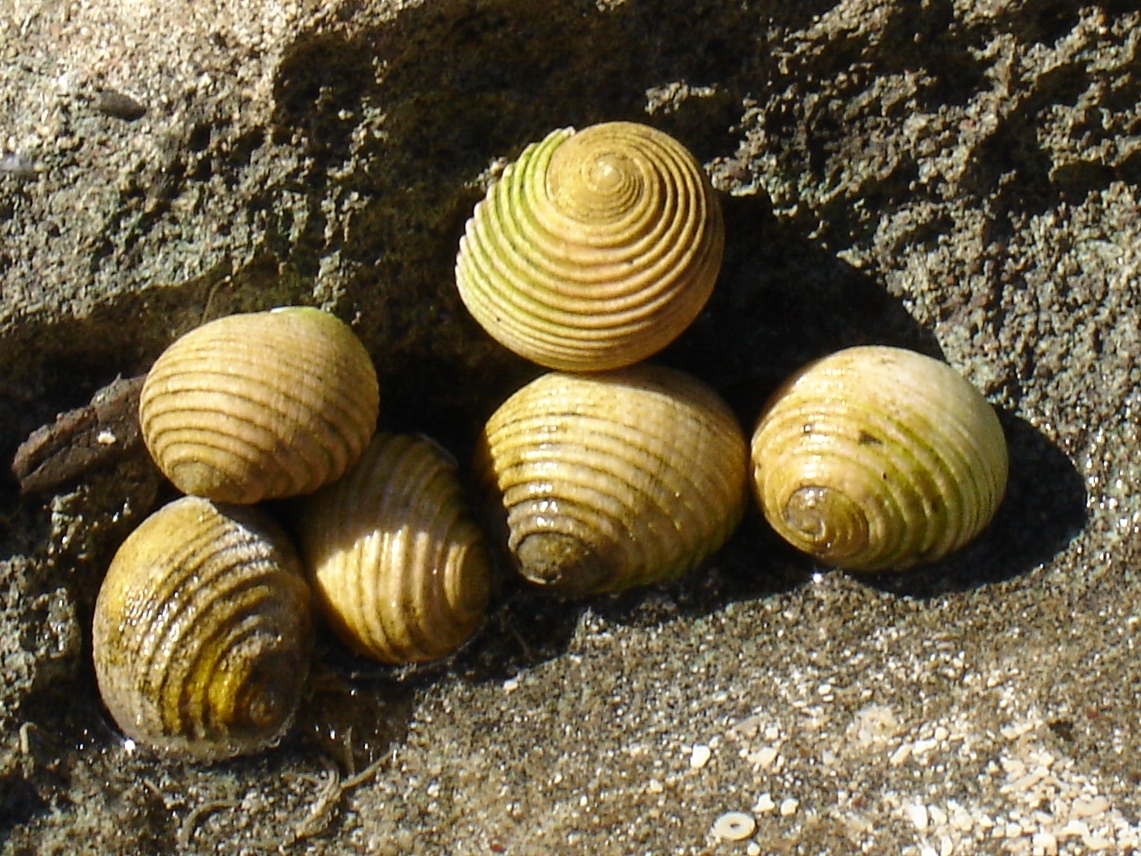Nerita Plicata on:
[Wikipedia]
[Google]
[Amazon]
''Nerita plicata'' is a

species
In biology, a species is the basic unit of classification and a taxonomic rank of an organism, as well as a unit of biodiversity. A species is often defined as the largest group of organisms in which any two individuals of the appropriate s ...
of tropical sea snail
Sea snail is a common name for slow-moving marine gastropod molluscs, usually with visible external shells, such as whelk or abalone. They share the taxonomic class Gastropoda with slugs, which are distinguished from snails primarily by the ...
, a marine
Marine is an adjective meaning of or pertaining to the sea or ocean.
Marine or marines may refer to:
Ocean
* Maritime (disambiguation)
* Marine art
* Marine biology
* Marine debris
* Marine habitats
* Marine life
* Marine pollution
Military
* ...
gastropod
The gastropods (), commonly known as snails and slugs, belong to a large taxonomic class of invertebrates within the phylum Mollusca called Gastropoda ().
This class comprises snails and slugs from saltwater, from freshwater, and from land. T ...
mollusk
Mollusca is the second-largest phylum of invertebrate animals after the Arthropoda, the members of which are known as molluscs or mollusks (). Around 85,000 extant species of molluscs are recognized. The number of fossil species is e ...
in the family Neritidae
Neritidae, common name the nerites, is a taxonomic family of small to medium-sized saltwater and freshwater snails which have a gill and a distinctive operculum.
MolluscaBase eds. (2021). MolluscaBase. Neritininae Poey, 1852. Accessed through: ...
, the nerites. This species is found throughout the Indo-West Pacific.
Characteristics
The ''Nerita plicata'' is characterized by its 30 mm shell height with its width being about the same. Their exterior is generally dull white or pink with ribs sometimes being black.
Habitat
This species lives high up in theintertidal zone
The intertidal zone, also known as the foreshore, is the area above water level at low tide and underwater at high tide (in other words, the area within the tidal range). This area can include several types of habitats with various species o ...
, on rocks. ''N. plicata'' has ridges on its shell that helps it stay cool when exposed at low tide by radiating heat away.
Reproduction
The ''Nerita plicata'' reproduces through copulation between male and female. After mating, females will deposit egg capsules which will eventually hatch into larvae.References
* Linnaeus, C. 1758. ''Systema Naturae'', 10th ed., vol. 1: 824 pp. Laurentii Salvii: Holmiae tockholm, Sweden Neritidae Gastropods described in 1758 Taxa named by Carl Linnaeus {{Neritidae-stub